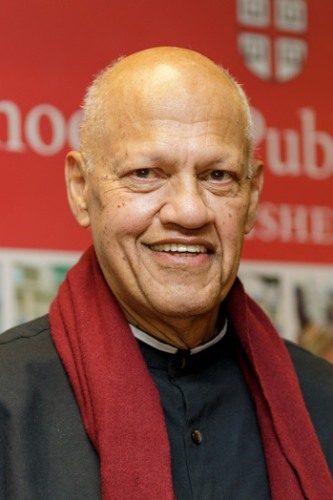---

Wilmot James, Ph.D.
Biography
Dr. James, an internationally recognized thought leader in biosecurity, global health, and pandemic preparedness, is a Senior Advisor to the Pandemic Center and a Professor of the Practice of Health Services, Policy and Practice.
Dr. James has served as Member of Parliament and Shadow Minister of Health in South Africa, and most recently held positions at Columbia University as Senior Research Scholar at the Institute for Social and Economic Research and Policy and as Chair of the Center for Pandemic Research. Wilmot co-chairs the National Framework sub-working group of the G7-led Global Partnership’s Signature Initiative to Mitigate Biological Threats in Africa; is Academic Chair of the World Economic Forum’s Biosecurity Readiness through Intelligence, Data, and Global Engagement (BRIDGE); chairs the Climate-Health Impacts Advisory Committee of the London based Wellcome Trust; chairs one of the selection panels for the Schmidt Science Fellows Post-Doctoral Program; and serves on the Advisory Board of Resolve to Save Lives. Dr. James will use his extensive experience to address public health and national security challenges in his role as senior advisor to the Pandemic Center.
Recent News
---
Smarter Health Financing for Self-Reliance and Resilience Across the African Continent
The COVID-19 pandemic caused a significant slowdown in economic growth across Africa and triggered widespread debt distress, leaving many countries struggling to recover. Growth is expected to remain sluggish for several years, contributing to significant reductions in health spending. Official development assistance (ODA) has dropped 70 percent since 2021, even as disease outbreaks have surged by more than 40 percent between 2022 and 2024. These trends place overwhelming strain on health systems across the continent.
The combination of economic slowdown and reductions in ODA is unfolding in a time of increasing biological threats. Climate change disproportionately impacts African countries, driving a surge in infectious disease outbreaks across the continent. At the same time, rapid technological advances are lowering barriers to the misuse of biology. Yet many countries in the region lack the necessary data and core capacities to keep their populations and economies safe from emerging health crises.
AI bioweapons risk presents greatest challenge of our time — a surveillance state vs chaotic misuse
Remembering Nelson Mandela’s meeting with antiviral pioneer and Nobel laureate David Baltimore
---
The global future of vaccines and why we should not forget the yellow fever story
Max Theiler is the first of 13 South Africans to receive a Nobel Prize (1951, physiology and medicine) for developing what became known as an attenuated vaccine for yellow fever. His discovery changed the course of medicine as it treated, cured and prevented the deaths of thousands upon thousands of people. His Swiss-born father, Sir Arnold Theiler, was the inaugural director of the Onderstepoort Veterinary Research Institute outside Pretoria.
---